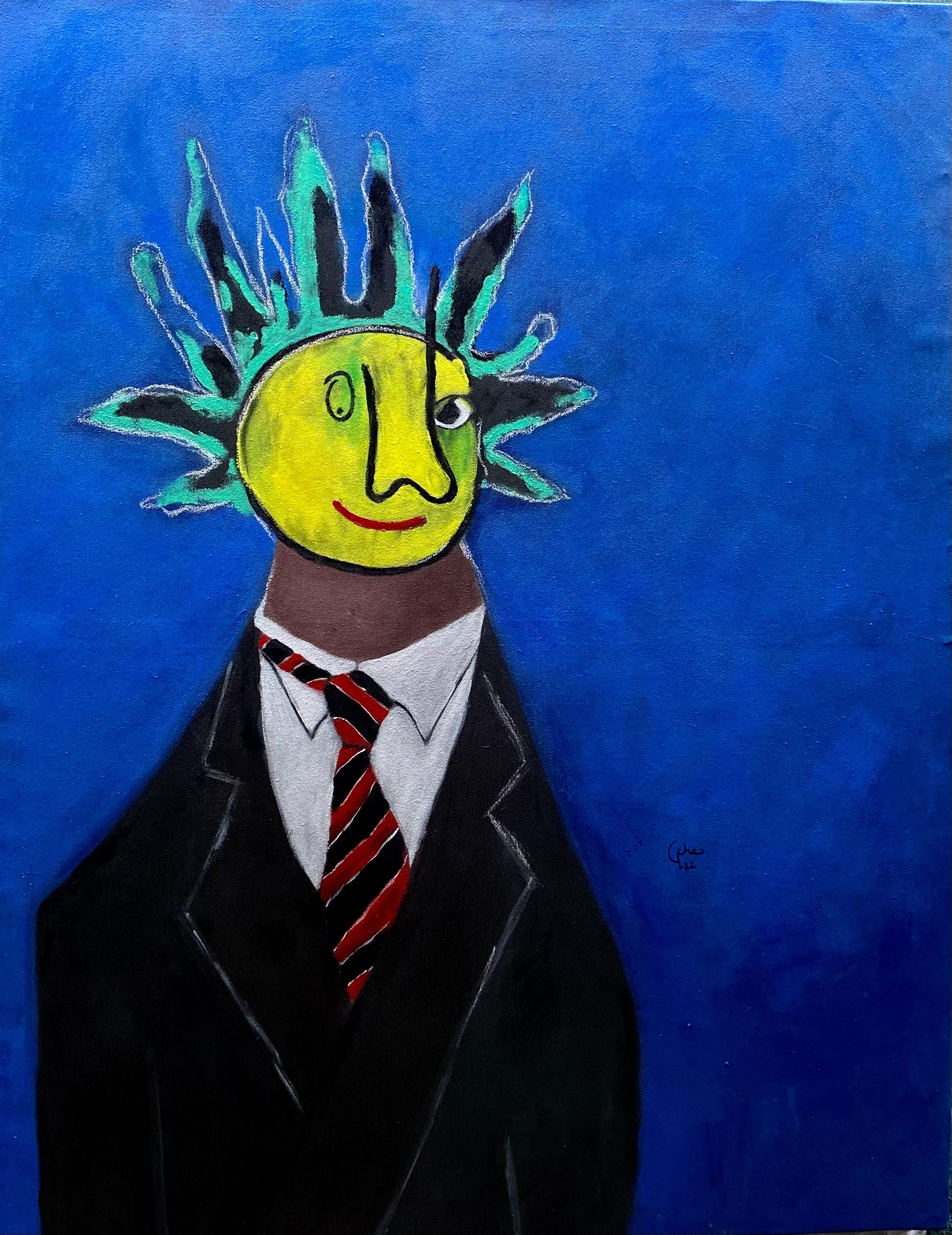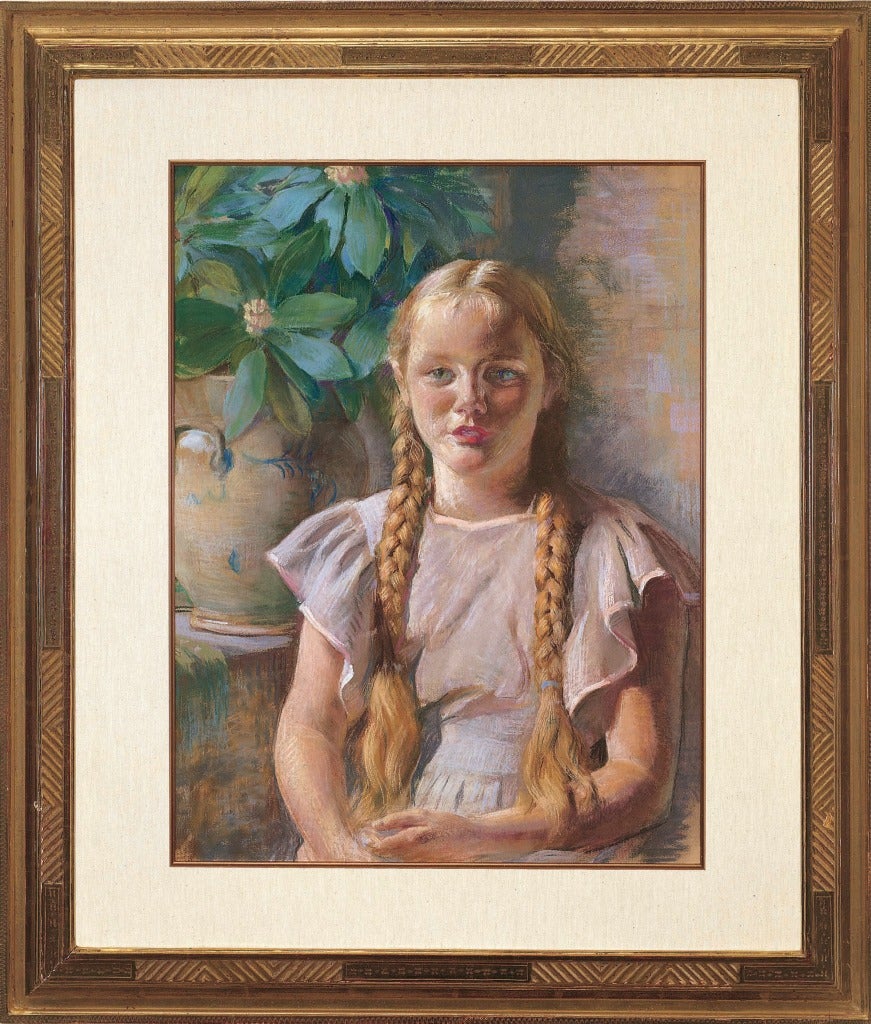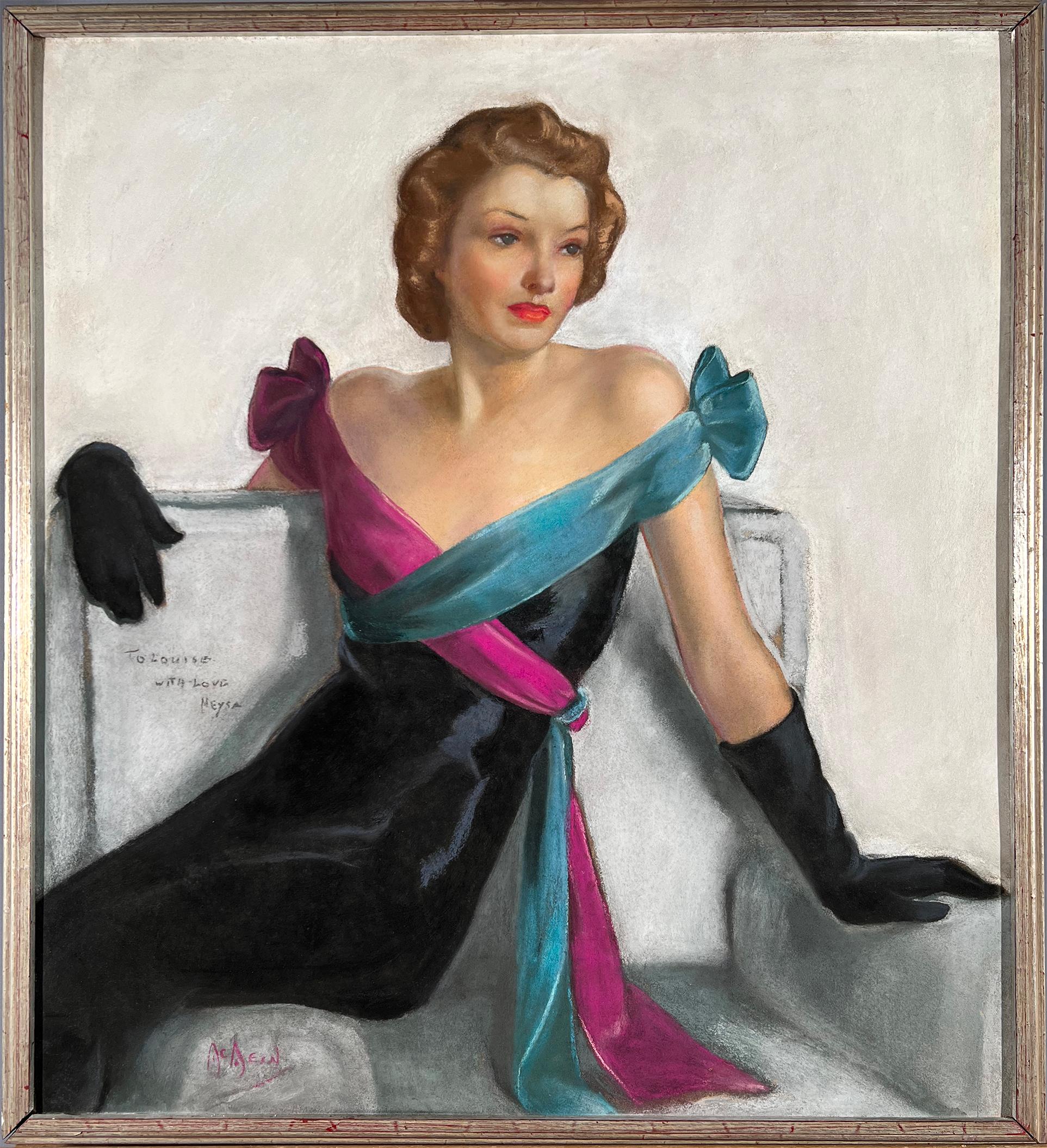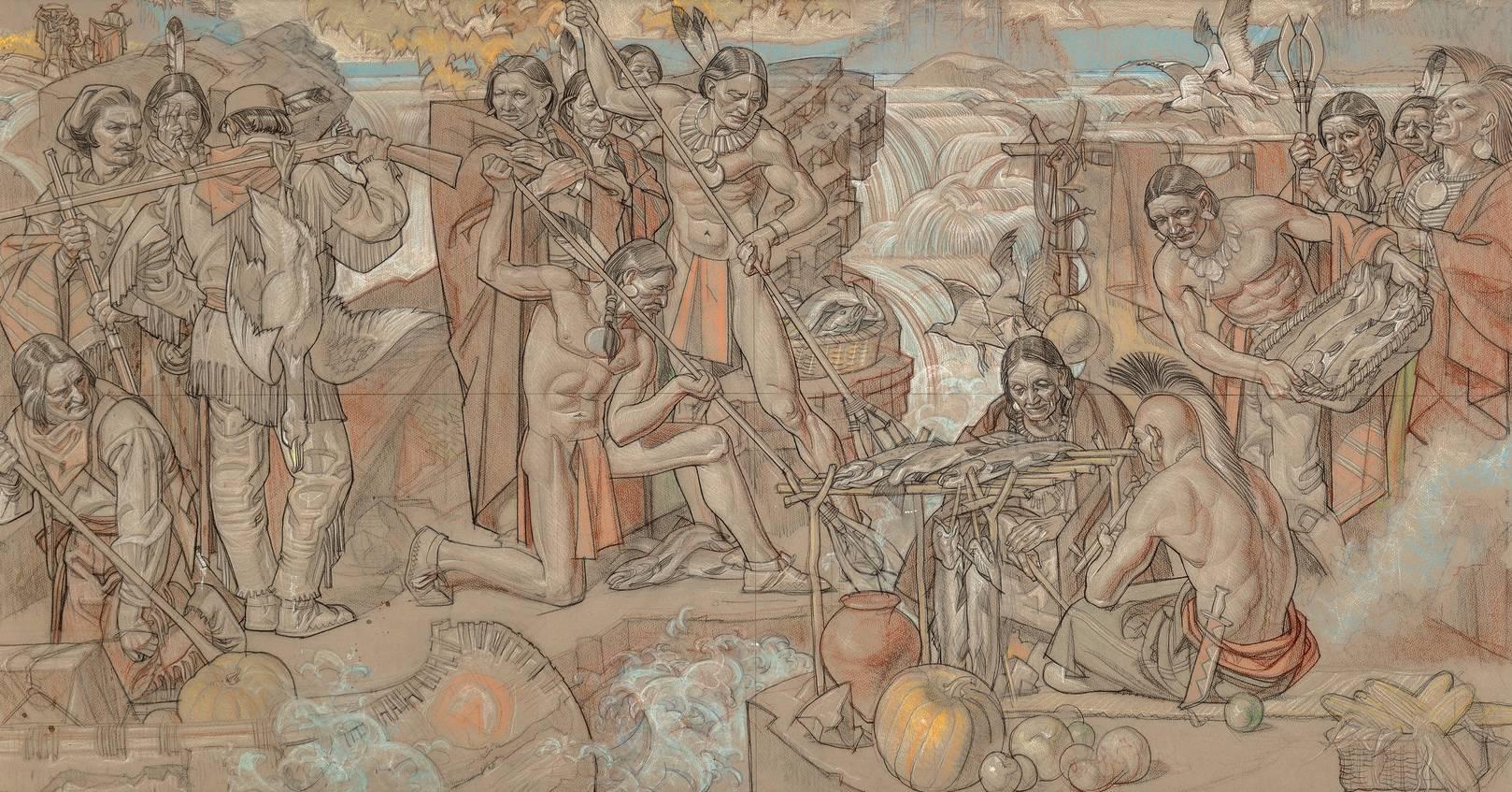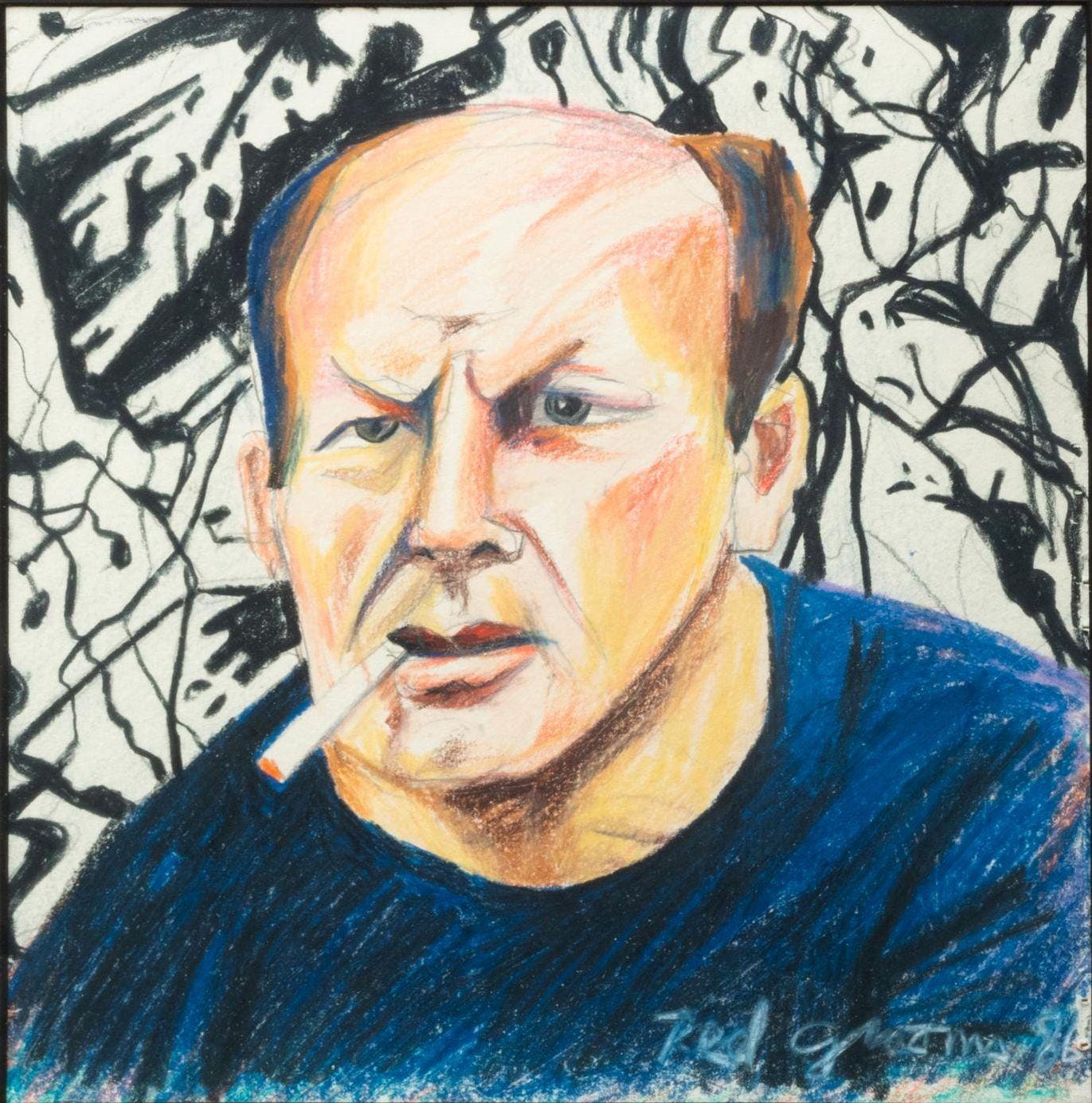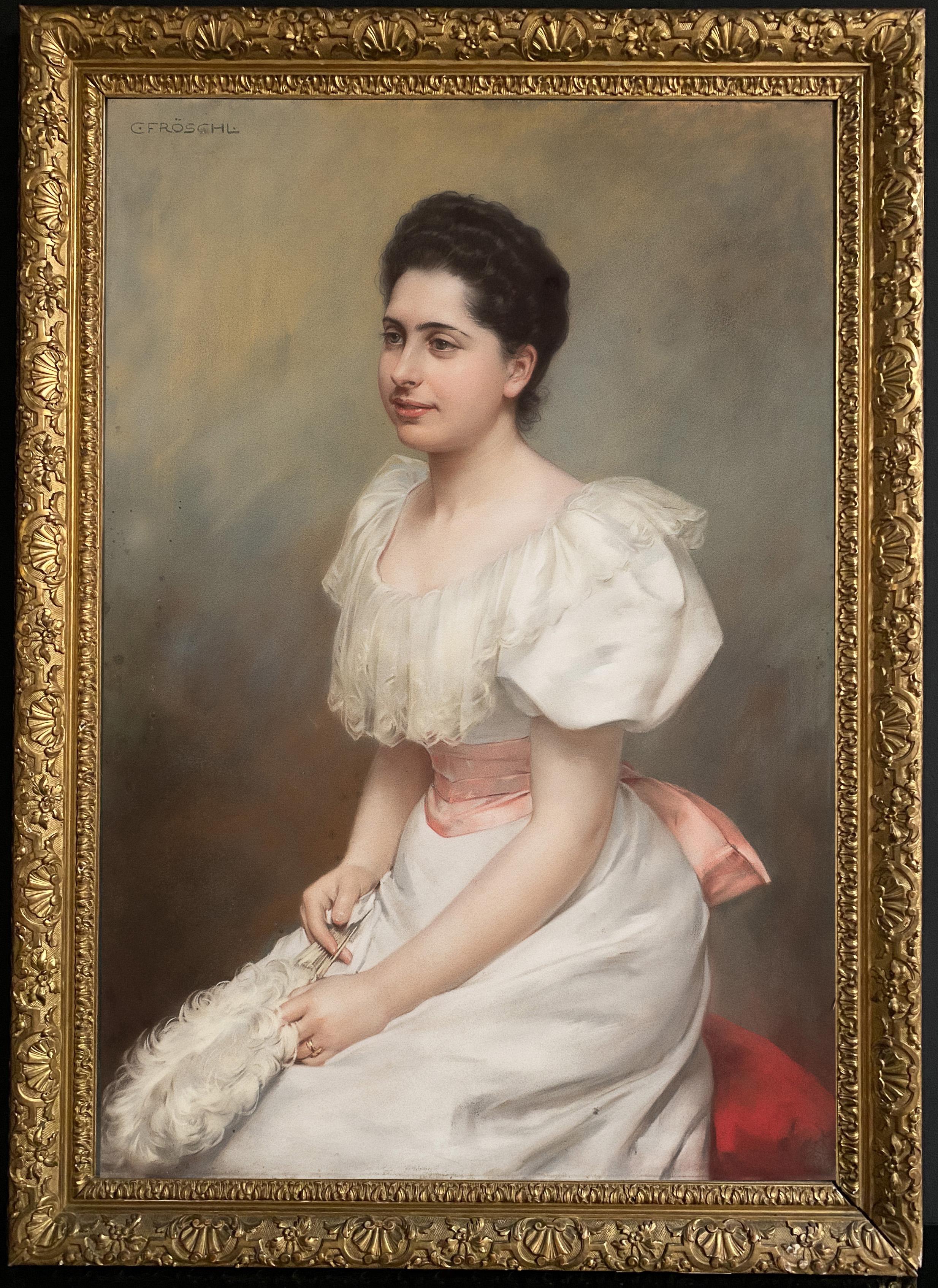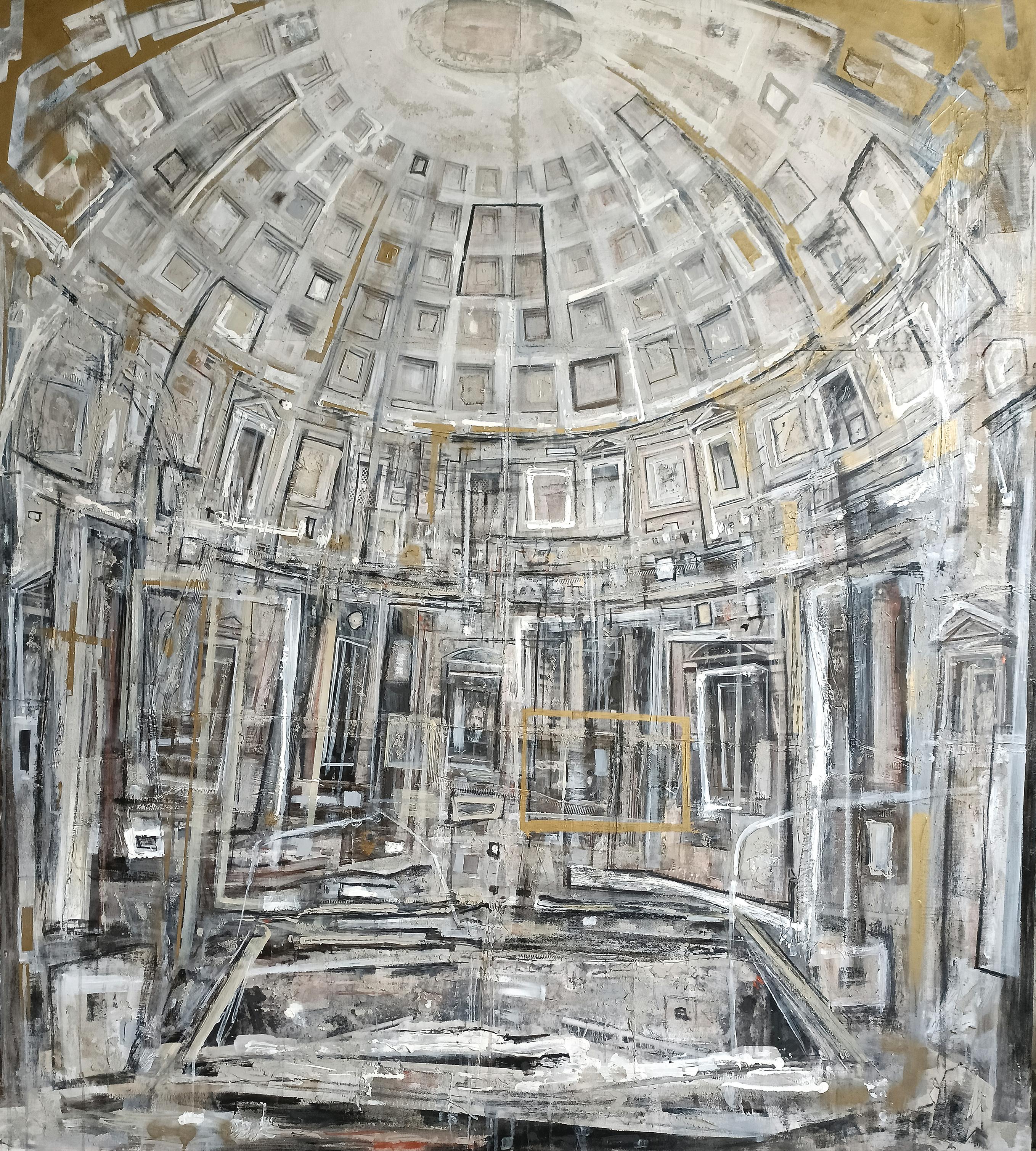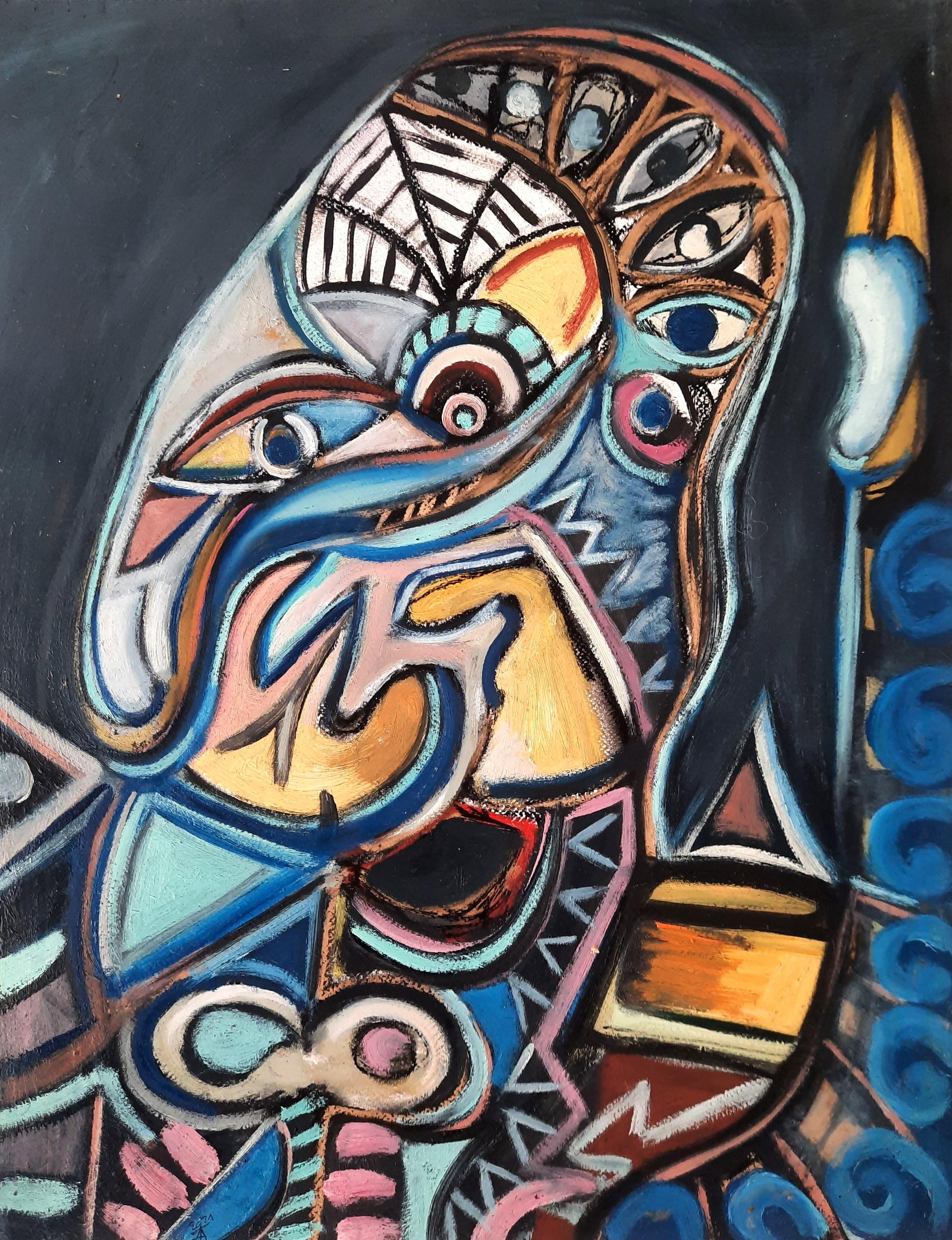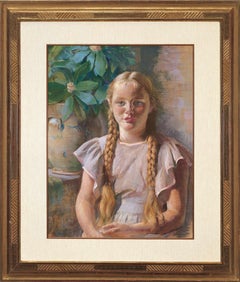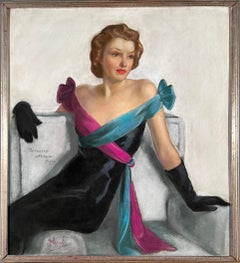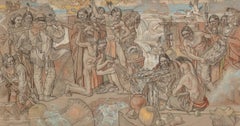Portrait of a Girl
View Similar Items
Marie LaurencinPortrait of a Girl
About the Item
- Creator:Marie Laurencin (1883-1956, French)
- Dimensions:Height: 18 in (45.72 cm)Width: 15 in (38.1 cm)
- Medium:
- Period:
- Condition:
- Gallery Location:London, GB
- Reference Number:1stDibs: LU5243487211
Marie Laurencin
Artist Marie Laurencin is best known for her enchanting portraits of women and young girls. The Parisian artist was linked to the avant-garde Cubist movement, but she endeavored to disassociate herself from the style as she instead drew on the Impressionist style of Pierre-Auguste Renoir in her paintings and prints, and created poetic, overtly sensual images of women in Fauvism’s subdued pastels at a time when the leagues of male artists around her became famous for making still lifes.
Just as Renoir and other painters began their careers painting pottery in Limoges, Laurencin trained in porcelain painting in the southwestern suburbs of Paris before she studied oil painting at Académie Humbert alongside influential Cubist painter Georges Braque and French designer and painter Francis Picabia. Her circle consisted of widely known and reputable artists including Braque and Pablo Picasso, with whom she exhibited. Her romantic partners were both male and female over the years, and she repeatedly refused marriage proposals from the most famous art dealer at the time, Sir Joseph Duveen, Baronet. Laurencin had a romantic relationship with French poet Guillaume Apollinaire that lasted six years.
Laurencin produced most of her best known work throughout the 1920s. During this era, she worked with art dealer Paul Rosenberg although she frequently ignored his business advice. Known to only paint children she liked, Laurencin also charged men twice that of women, as well as brunettes more than blondes, and offered discounts for works she enjoyed doing and steeper prices for those she cared less for.
Laurencin’s work increasingly attracted attention over time — she had more than ten solo exhibitions in 1939 alone and was commissioned for portraits by the likes of Jean Cocteau and Coco Chanel. (Revered fashion designer Karl Lagerfeld — who consistently displayed a knack for synthesizing old and new, high and low — drew on the work of Laurencin in his Spring/Summer 2011 collection for Chanel.)
Laurencin’s six illustrations of "Alice" in a 1930 edition of Lewis Carroll's Alice in Wonderland comprise a small sample of the art she made that is held in the public collection of the Museum of Modern Art. Her works are also held in the collections of the Metropolitan Museum of Art, the Musée d’Orsay and the National Museum of Women in the Arts. In 1983, a museum opened in her honor — the Musée Marie Laurencin in Nagano, Japan. At the time, it was the only museum in the world to focus solely on a female painter.
Find original Marie Laurencin paintings and prints on 1stDibs.
- Self-Portrait - Royal Academy Founding Member, 18th CenturyBy Francis HaymanLocated in London, GBFrancis Hayman RA 1708–1776 Self-Portrait Oil on oak panel Image size: 8 x 6¼ inches Contemporary gilt frame This newly discovered work is the earliest known self portrait by Francis Hayman, dated to the mid to late 1720’s. The small scale of the portrait gives it a strong sense of intimacy. Whereas clients would often dress themselves in their best clothes for a sitting, Hayman has portrayed himself in informal attire, with his shirt unbuttoned and a wig cap. Born in 1708 to a respectable Devonshire family, his training began at the tender age of ten under the tutelage of the historical painter Robert Brown, who was probably an uncle. By the 1730’s he is known to have been engaged in painting scenery for the popular theatres on Goodman’s Fields and Drury Lane. He established a studio on St Martin’s Lane, and demonstrated his versatility as one of the most important painters of his time in portraits, illustration and history painting. Indeed, he was one of the first English painters deemed to have the skill and proficiency to rival that of the foreign masters, such as Holbein and Kneller, who were brought in by the court to make up for the perceived shortcomings of the native artists. Led by William Hogarth, Hayman and other artists began to create a new movement in the English art world. Thomas Gainsborough was one of his pupils, whom he is said to have introduced to the more lascivious and debauched underbelly of London life. After mostly making his living as an illustrator, in the 1740’s Hayman was commissioned by the proprietor of the Vauxhall Pleasure Gardens, Jonathan Tyers, to produce a series of four large celebratory canvases depicting British victories from the Seven Years War. His association with Tyers continued, and over the next ten years he produced a number of large decorative paintings...Category
18th Century Old Masters Portrait Paintings
MaterialsOil Pastel, Oak
- The Distraction, Late 19th Century Oil Painting, OrientalistLocated in London, GBWalter Charles Horsley 1855 – 1921 The Distraction Oil on canvas, signed lower left Image size: 25 x 20 1/2 inches (63.5 x 52 cm) Orientalist ha...Category
Late 19th Century Portrait Paintings
MaterialsOil, Canvas
- Portrait of a Trepanning Surgeon, Early 17th Century Oil PaintingLocated in London, GBOil on oak panel, inscribed top left ‘AETATIS SUAE 32’ Image size: 27 x 35 inches (68.5 x 89 cm) Contemporary style handmade frame This is a portrait of a medical figure from the ea...Category
Early 17th Century Portrait Paintings
MaterialsOak, Oil
- Portrait of a Girl, 17th Century English School Old Masters OilBy Gilbert JacksonLocated in London, GBGilbert Jackson English Active: 1620 - 1650 Portrait of a Girl Oil on panel, signed upper left and Inscribed upper right Image size: 24 ½ x 20 inches Contemporary style hand made...Category
17th Century Old Masters Portrait Paintings
MaterialsOil
- Portrait of William Herbert, 3rd Earl of Pembroke, Early 17th Century PortraitLocated in London, GBEnglish School, (circa 1600) Portrait of William Herbert, 3rd Earl of Pembroke Oil on panel, oval Image size: 29¼ x 23⅞ inches Painted wooden frame Provenance: 176, Collection of Francis Greville, 1st Earl of Warwick. The Trustees of the Lord Brooks’ Settlement, (removed from Warwick Castle). Sotheby’s, London, 22nd March 1968, lot 81. Painted onto wooden panel, this portrait shows a dark haired gentleman in profile sporting an open white shirt. On top of this garments is a richly detailed black cloak, decorated with gold thread and lined with a sumptuous crimson lining. With the red silk inside it’s all very expensive and would fall under sumptuary laws – so this is a nobleman of high degree. It’s melancholic air conforms to the contemporary popularity of this very human condition, evident in fashionable poetry and music of the period. In comparison to our own modern prejudices, melancholy was associated with creativity in this period. This portrait appeared in the earliest described list of pictures of Warwick castle dating to 1762. Compiled by collector and antiquary Sir William Musgrave ‘taken from the information of Lord & Lady Warwick’ (Add. MSS, 5726 fol. 3) is described; ‘8. Earl of Essex – an original by Zuccharo – seen in profile with black hair. Holding a black robe across his breast with his right hand.’ As tempting as it is to imagine that this is a portrait of Robert Devereux, the 2nd Earl Essex, we might take this with a pinch of salt. Its identification with this romantic and fatal Elizabethan might well have been an attempt to add romance to Warwick Castle’s walls. It doesn’t correspond all that well with Essex’s portraits around 1600 after his return from Cadiz. Notably, this picture was presumably hung not too far away from the castle’s two portraits of Queen Elizabeth I. The first, and undoubtedly the best, being the exquisite coronation portrait that was sold by Lord Brooke in the late 1970s and now hangs in the National Portrait Gallery. The second, described as being ‘a copy from the original at Ld Hydes’, has yet to resurface. The portrait eventually ended up being hung in the State Bedroom of Warwick Castle. Archival documents present one other interesting candidate. The Greville family’s earliest inventory of paintings, made in 1630 at their home Brooke House in Holborn, London, describes five portraits of identified figures. All five belonged to the courtier, politician and poet Sir Fulke Greville (1554-1628), 1st Baron Brooke, and were hung in the ‘Gallerie’ of Brooke House behind yellow curtains. One of them was described as being of ‘Lord of Pembrooke’, which is likely to have been William Herbert (1580-1630), 3rd Earl of Pembroke. William was the eldest son of Greville’s best friend’s sister Mary Sidney, and was brought up in the particularly literary and poetically orientated household which his mother had supported. Notably, the 3rd Earl was one of the figures that Shakespeare’s first folio was dedicated to in 1623. The melancholic air to the portrait corresponds to William’s own pretensions as a learned and poetic figure. The richness of the robe in the painting, sporting golden thread and a spotted black fabric, is indicative of wealth beyond that of a simple poet or actor. The portrait’s dating to around the year 1600 might have coincided with William’s father death and his own rise to the Pembroke Earldom. This period of his life too was imbued with personal sadness, as an illicit affair with a Mary Fitton had resulted in a pregnancy and eventual banishment by Elizabeth I to Wilton after a short spell in Fleet Prison. His illegitimate son died shortly after being born. Despite being a close follower of the Earl of Essex, William had side-stepped supporting Devereux in the fatal uprising against the Queen and eventually regained favour at the court of the next monarch James I. His linen shirt is edged with a delicate border of lace and his black cloak is lined on the inside with sumptuous scarlet and richly decorated on the outside with gold braid and a pattern of embroidered black spots. Despite the richness of his clothes, William Herbert has been presented in a dishevelled state of semi-undress, his shirt unlaced far down his chest with the ties lying limply over his hand, indicating that he is in a state of distracted detachment. It has been suggested that the fashion for melancholy was rooted in an increase in self-consciousness and introspective reflection during the late 16th and early 17th centuries. In contemporary literature melancholy was said to be caused by a plenitude of the melancholy humor, one of the four vital humors, which were thought to regulate the functions of the body. An abundance of the melancholia humor was associated with a heightened creativity and intellectual ability and hence melancholy was linked to the notion of genius, as reflected in the work of the Oxford scholar Robert Burton, who in his work ‘The Anatomy of Melancholy’, described the Malcontent as ‘of all others [the]… most witty, [who] causeth many times divine ravishment, and a kind of enthusiamus… which stirreth them up to be excellent Philosophers, Poets and Prophets.’ (R. Burton, The Anatomy of Melancholy, London, 1621 in R. Strong, ‘Elizabethan Malady: Melancholy in Elizabethan and Jacobean Portraits’, Apollo, LXXIX, 1964). Melancholy was viewed as a highly fashionable affliction under Elizabeth I, and her successor James I, and a dejected demeanour was adopted by wealthy young men, often presenting themselves as scholars or despondent lovers, as reflected in the portraiture and literature from this period. Although the sitter in this portrait is, as yet, unidentified, it seems probable that he was a nobleman with literary or artistic ambitions, following in the same vain as such famous figures as the aristocratic poet and dramatist, Edward de Vere...Category
Early 17th Century Old Masters Portrait Paintings
MaterialsWood Panel, Oil
- Portrait of a King's MessengerBy Charles PhilipsLocated in London, GBCharles Philips 1703 - 1747 Portrait of a King's Messenger Oil on canvas Image size: 35 ¾ x 28 inches Original gilt frame King's Messenger The job of a King's Messenger was that of a diplomatic courier, hand-carrying important and secret documents around the world. Some say that the history of the sovereigns' messengers goes back to 1199, but the first known messenger was John Norman, who in 1485 earned 4d (1½ pence) per day for carrying the state papers of Richard III. The silver greyhound on the messenger's badge dates back to Charles II. In 1660, during his exile at Breda, Netherlands, Charles II issued a declaration of amnesty to all those who had opposed him and his father. He used messengers to make his intentions known. In answer to the messenger's question "How will they know me?", Charles reached forward to a silver bowl on the table in front of him. This bowl, with four decorative greyhounds standing proud above the rim, was well known to all courtiers. Charles broke off a greyhound and gave it to the messenger as a guarantee that the message came from him. From that date, the King's Messenger always wore a silver greyhound around his neck. Later, dating from George II or III, a badge with the Royal Arms in enamel, with the greyhound suspended beneath, was worn. A George III example of the King's Messenger Badge, pre 1800, sold for over £30,000 pounds some years ago. The silver greyhounds were minted for each new reign, except the brief one of King Edward VIII. The sovereign's messengers were originally controlled by the Lord Chamberlain, being Messengers of the Great Chamber. When the Foreign Office was created in 1782, the messengers remained common to the three Secretaries of State. Charles Philips was an English artist known for painting a number of portraits and conversation pieces for noble and Royal patrons in the mid-eighteenth century. Philips was baptised in the combined parish of St Mildred, Poultry with St Mary...Category
18th Century Portrait Paintings
MaterialsOil, Canvas
- "Frances in Braids"By Daniel GarberLocated in Lambertville, NJJim’s of Lambertville is proud to offer this artwork. Pastel portrait of artist's granddaughter. Complemented by original signed Harer frame. Illustra...Category
1930s American Impressionist Portrait Paintings
MaterialsPastel
- Saturday Evening Post Cover, Evening Gown May 21st, 1938By Neysa McMeinLocated in Miami, FLPastel on board - Saturday Evening Post Cover, Evening Gown May 21st, 1938 - Reproduced version looks better because the Saturday Evening Post Art Director retouched the plates before printing and strengthened the colors to give it more newsstand appeal - From Wiki : as an American illustrator and portrait painter who studied at The School of The Art Institute of Chicago and Art Students League of New York. She began her career as an illustrator and during World War I, she traveled across France entertaining military troops with Anita P...Category
1930s American Impressionist Portrait Paintings
MaterialsPastel
- Androscoggin River Falls, study for The Manufacturers National Bank of Lewiston-By Dean CornwellLocated in Miami, FLIf there ever were a perfect work in the canon of art history, this masterpiece study by Dean Cornwell would be it. Every line has meaning and not a line out of place, as Cornwell d...Category
1960s American Realist Figurative Paintings
MaterialsPencil, Pastel
- Saturday Evening Post Cover, November 5, 1927By William Haskell CoffinLocated in Fort Washington, PADate: 1927 Medium: Pastel on Paper Dimensions: 24.00" x 19.00" Signature: Signed Lower Right Saturday Evening Post Cover, November 5, 1927Category
1920s Portrait Paintings
MaterialsPaper, Pastel
- "Jackson Pollock, " Red Grooms, New York School Pop Art PortraitBy Red GroomsLocated in New York, NYRed Grooms (American, b. 1937) Jackson Pollock, 1986 Pastel on paperboard 9 1/4 x 9 1/4 inches Signed and dated lower right Provenance: Hirschl & Adler Modern, New York Charles Rog...Category
1980s Pop Art Portrait Paintings
MaterialsPastel, Board
$18,400 Sale Price20% Off - Jean-Michel BasquiatLocated in Ibadan, OyoPainting Ships in a well-protected tube from Nigeria This work is unique, this is not a print or other type of copy. Signed on the front side and accompanied by a Certificate of Auth...Category
21st Century and Contemporary Neo-Expressionist Portrait Paintings
MaterialsAcrylic, Pastel, Canvas

